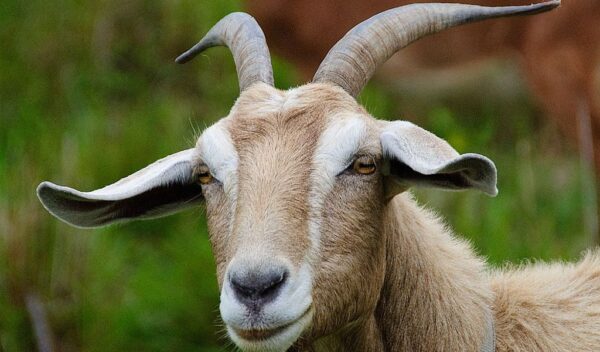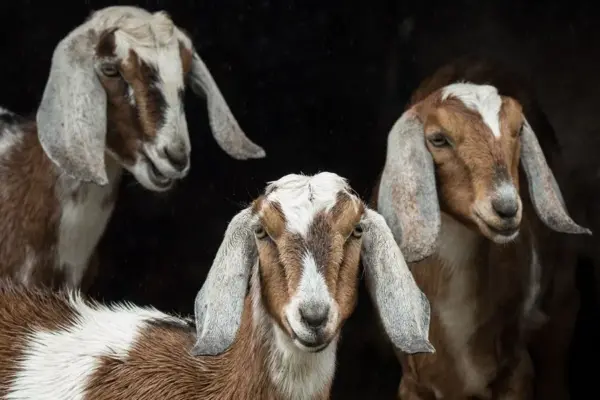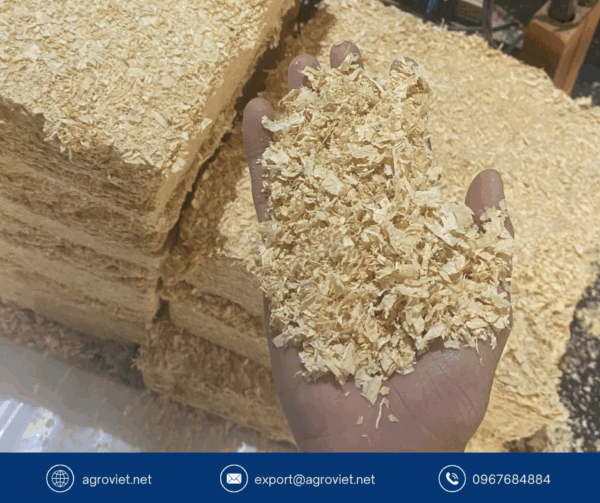The Link Between Dirty Bedding and Mastitis in Dairy Goats

Introduction to Mastitis in Dairy Goats
Mastitis, an inflammatory condition of the udder, is a prevalent and costly disease in dairy goats, affecting milk quality, animal welfare, and farm profitability. Dirty, wet bedding significantly increases the risk of mastitis by harboring pathogens like Staphylococcus aureus and Escherichia coli, which invade the udder through the teat canal. Clean wood pellets and wood shavings, with their superior absorbency and hygienic properties, are effective solutions for preventing mastitis by maintaining a dry, clean environment. Drawing on insights from DuraFerm’s guide on mastitis in goats, this post explores how poor bedding contributes to mastitis and why wood pellets and shavings are critical for prevention.
Understanding Mastitis in Dairy Goats
Mastitis in dairy goats is an inflammation of the mammary gland, primarily caused by bacterial infections, though fungal or viral pathogens, such as caprine arthritis encephalitis virus (CAEV), can also contribute. It presents in two forms: clinical mastitis, with visible symptoms like udder swelling, pain, and abnormal milk (clots, discoloration, or watery consistency), and subclinical mastitis, which is harder to detect but increases somatic cell counts (SCC) and reduces milk yield. The DuraFerm guide notes that mastitis affects both dairy and meat goats, with 20-30% of dairy does impacted annually, leading to treatment costs of $50-$200 per animal and milk production losses of up to 25%.
How Dirty Bedding Fuels Mastitis
Dirty, wet bedding is a primary environmental factor in mastitis development. Moisture from urine, water spills, or poor ventilation softens the teat skin, making it susceptible to bacterial entry. Soiled bedding, contaminated with manure, harbors high loads of pathogens like E. coli and S. uberis, which thrive in damp, organic-rich conditions. The DuraFerm study highlights that dirty bedding and pens increase mastitis risk by 25%, as bacteria can reach loads of 10^6 CFU/g in wet litter, directly exposing udders during lying. Crowded conditions and poor hygiene further amplify transmission, especially in milking parlors.

Bacterial and Other Pathogens
Mastitis in goats is caused by several pathogens:
-
Staphylococcus aureus: Causes chronic mastitis with abscess formation, often subclinical and persistent.
-
Streptococcus species: Leads to acute or subclinical mastitis, spreading via contaminated milking equipment.
-
Escherichia coli: Associated with environmental mastitis, thriving in wet, manure-laden bedding for dairy goats.
-
Mycoplasma: Causes contagious mastitis, spreading within herds through direct contact or shared bedding.
-
Viral Pathogens: CAEV can cause “hard udder,” reducing milk flow and causing firm, swollen udders. The DuraFerm guide notes that dirty hands, contaminated milking machines, or improper milking techniques introduce bacteria, while wet bedding exacerbates environmental pathogen exposure. Teat injuries from rough handling or equipment further increase infection risk.
Health and Economic Impacts For Dairy Goats
Mastitis has severe consequences for goat health and farm economics:
-
Health: Clinical mastitis causes pain, swelling, and reduced mobility, impacting feeding and overall well-being. Subclinical cases silently reduce milk quality and yield, increasing SCC and risking processor penalties. Severe cases, like gangrenous mastitis from S. aureus, can lead to udder loss or death.
-
Economic: Treatment costs, including antibiotics and labor, range from $50-$200 per doe. Milk yield losses of 10-25% and culling of chronic cases cost $100-$500 per animal. Large dairy operations face annual losses of $10,000-$50,000 due to reduced milk quality and veterinary expenses. The DuraFerm guide emphasizes that mastitis also poses zoonotic risks, potentially contaminating milk and affecting consumer safety, increasing regulatory scrutiny.
Watch this: https://www.facebook.com/Livestockdpunjab/videos/mastitis-in-goat/2003373480160242/

Why Dirty Bedding Increases Infection Risk For Dairy Goats
Poor bedding choices, such as straw or reused sawdust, exacerbate mastitis by:
-
Retaining Moisture: Wet bedding softens teat skin, facilitating bacterial entry through the teat canal.
-
Harboring Pathogens: Soiled litter accumulates manure, increasing E. coli and Streptococcus loads.
-
Promoting Transmission: Contaminated bedding spreads bacteria via direct udder contact or shared milking equipment.
-
Lacking Hygiene: Infrequent replacement or inadequate bedding depth allows pathogens to persist, with studies showing a 20% higher mastitis incidence in unhygienic conditions. The DuraFerm study underscores that dirty bedding, combined with poor milking hygiene, is a primary driver of environmental mastitis, particularly in crowded or poorly ventilated barns.
The Importance of Wood Pellets and Shavings For Dairy Goats
Clean wood pellets and wood shavings are highly effective bedding solutions for preventing mastitis. Wood pellets, made from compressed, heat-treated sawdust, absorb up to five times their weight in moisture, keeping litter dry and reducing bacterial survival. Their heat-treatment process eliminates pathogens, ensuring a hygienic environment. Wood shavings, sourced from untreated softwoods like pine, offer excellent absorbency and a loose, comfortable surface that minimizes udder irritation. Both materials maintain litter moisture below 20%, disrupting conditions that support E. coli, Streptococcus, and other pathogens. Their low-dust nature reduces airborne bacterial spread, protecting udder health.
Scientific Evidence Supporting Wood Pellets and Shavings
The DuraFerm guide and related research, such as the ScienceDirect study on poultry bedding, confirm that absorbent, hygienic bedding reduces pathogen loads. Wood pellets and shavings lower litter moisture by 40% compared to straw, decreasing bacterial survival rates. Their hygienic properties limit S. aureus and E. coli proliferation, with barns using these materials reporting a 25-30% reduction in mastitis cases. The heat-treated composition of pellets ensures minimal contamination, while shavings’ coarse texture prevents caking, maintaining a dry, clean environment. These bedding types also enhance goat comfort, reducing stress that weakens immunity and increases infection susceptibility.
Key Benefits of Wood Pellets and Shavings For Dairy Goats
-
Moisture Control: Absorbs water and manure, keeping litter dry to inhibit bacterial growth of your dairy goats.
-
Hygienic Properties: Heat-treated pellets and clean shavings reduce pathogen populations.
-
Low Dust: Minimizes airborne bacteria, protecting udder and respiratory health of your dairy goats.
-
Comfort: Provides a soft, cushioned surface, reducing stress and teat irritation.
-
Cost-Effective: Durable, requiring less frequent replacement than straw or sand.
Consequences of Neglecting Proper Bedding For Dairy Goats 
Using dirty, wet, or low-quality bedding increases mastitis risk, leading to severe outcomes. Outbreaks affect 20-30% of dairy does, with milk yield losses of 10-25% and treatment costs of $50-$200 per animal. Chronic cases necessitate culling, costing $100-$500 per doe, with large farms facing $10,000-$50,000 in annual losses. Poor bedding compromises welfare, causing pain and stress, and increases zoonotic risks through contaminated milk. The DuraFerm guide warns that neglecting hygiene amplifies pathogen spread, impacting herd health and farm reputation.
Practical Tips for Using Wood Pellets and Shavings
To maximize the benefits of wood pellets and shavings, dairy goat farmers should:
-
Source high-quality, untreated wood pellets or shavings from reputable suppliers.
-
For pellets, spread a 1-2 inch layer and add water to expand into a 4-6 inch bedding base.
-
For shavings, maintain a 4-6 inch depth for absorbency and comfort.of your dairy goats.
-
Clean pens daily, removing soiled bedding and adding fresh material to ensure hygiene.
-
Ensure 6-8 air changes per hour through ventilation to enhance moisture control.
Complementary Strategies for Mastitis Prevention For Dairy Goats
In addition to wood pellets and shavings, these practices help prevent mastitis:
-
Milking Hygiene: Wash hands, sanitize teats, and use post-milking teat dips to reduce bacterial entry, as recommended by DuraFerm.
-
Nutrition: Provide a balanced diet with vitamin E and selenium, such as DuraFerm Goat Concept•Aid, to boost immunity and support udder health.
-
SCC Monitoring: Use the California Mastitis Test or milk culture to detect subclinical cases early.
-
Dry-Off Treatment: Administer intramammary antibiotics like cefazolin under veterinary supervision to prevent infections during the dry period.
-
Herd Management: Quarantine affected does and maintain proper milking equipment to limit pathogen spread.
Economic and Welfare Impacts
Wood pellets and shavings improve goat welfare by reducing mastitis incidence, ensuring comfort, and minimizing stress-related immune suppression. Healthy does maintain milk yield and quality, saving farmers $50-$500 per animal in treatment and production losses. The DuraFerm guide highlights that effective bedding management supports herd longevity and reduces culling. The durability of pellets and shavings lowers bedding costs, while their biodegradable nature aligns with sustainable farming, meeting consumer demand for ethical dairy production and boosting profitability.
Addressing Challenges with Wood Pellets and Shavings
Challenges include the initial setup time for wetting pellets to expand and sourcing high-quality, dust-free products. Farmers should select premium materials and store them in dry conditions to prevent mold. Daily cleaning prevents compaction, maintaining absorbency. With proper management, wood pellets and shavings offer significant advantages in preventing mastitis and supporting herd health.
Conclusion
Dirty, wet bedding significantly increases mastitis risk in dairy goats by fostering bacterial pathogens like S. aureus and E. coli, leading to reduced milk production, compromised welfare, and substantial economic losses. Clean wood pellets and shavings, with their high absorbency, low-dust, and hygienic properties, are proven solutions to reduce pathogen contamination and maintain a dry environment. Supported by DuraFerm’s insights, these bedding materials lower mastitis incidence, enhance goat welfare, and reduce costs. By prioritizing wood pellets and shavings alongside robust management practices, dairy goat farmers can protect their herds, ensure high-quality milk production, and achieve sustainable, profitable operations.
Read more: https://vietnambestwood.com/general/reuse-pine-wood-shavings-ideas/
